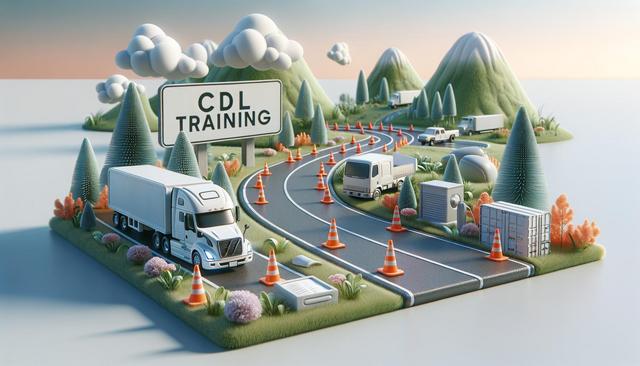Understanding CDL and Its Importance
A Commercial Driver’s License (CDL) is a requirement for those looking to operate large trucks or commercial vehicles across state lines or for business purposes. Obtaining a CDL involves both written and practical exams, along with meeting specific medical and legal requirements. For many, the cost of attending a truck driving school—often amounting to thousands of dollars—can be a significant barrier. That’s where paid CDL training comes into play. These programs are often offered by freight companies or third-party schools in partnership with transportation firms, allowing candidates to earn their license while minimizing out-of-pocket expenses. With a CDL in hand, drivers are qualified for a wide range of jobs in logistics, delivery, and freight industries, making it a valuable credential for long-term career development.
What Is Paid CDL Training?
Paid CDL training is a program where a trucking company sponsors your training in exchange for a commitment to work with them for a set period after you obtain your license. This model is particularly helpful for those who are ready to begin a career in trucking but lack the funds to pay for formal training. These programs typically involve:
- Classroom instruction covering road safety, regulations, and vehicle maintenance
- Hands-on driving practice with experienced instructors
- Support in preparing and registering for the CDL exam
While the structure of these programs may vary, most are designed to get trainees licensed and on the road within a few weeks to a few months. In addition to reducing initial costs, many programs offer a stipend during training or cover living expenses, making them appealing to individuals looking for a quick entry into the workforce.
Benefits of Choosing Paid CDL Training
There are several compelling reasons to consider enrolling in a paid CDL training program. First and foremost, it removes the financial burden associated with traditional truck driving schools. Participants can focus on learning without the stress of tuition fees. Other advantages include:
- Guaranteed job placement upon successful completion of the program
- Opportunities to gain real-world driving experience early in your training
- Mentorship and guidance from seasoned professionals in the industry
- Structured learning environment tailored to industry standards
These benefits make paid CDL training a practical choice for individuals seeking a stable, long-term career. However, it’s important to read the terms carefully, as some programs may require a work commitment ranging from several months to a couple of years.
How to Find a Paid CDL Training Program
Searching for paid CDL training programs has become easier thanks to the availability of online resources. Many transportation companies and training schools have dedicated pages explaining their offerings, application processes, and eligibility requirements. When researching options, consider the following factors:
- Program duration and schedule flexibility
- Location and whether housing is provided
- Reputation of the training provider and job placement rate
- Terms of employment commitment after training
It’s also wise to read reviews and testimonials from past participants. These can give you valuable insights into the quality of instruction and the overall experience. Some job boards and trucking forums also offer directories of training programs, making your search even more efficient.
What to Expect During and After Training
Once enrolled, trainees can expect an intensive learning environment focused on safety, regulations, and responsible driving practices. Most programs blend classroom learning with on-the-road sessions, gradually building confidence and skill. After passing the CDL exam, graduates typically begin working with their sponsoring company, often starting with regional or long-haul routes. The early months on the job may involve working with a mentor or co-driver until solo driving is authorized. Over time, drivers can build experience and qualify for more specialized roles, including:
- Hazardous materials transport
- Refrigerated freight
- Local or regional delivery services
- Fleet management or dispatcher roles
Paid CDL training not only opens the door to immediate employment but also sets the foundation for a career path with growth opportunities. Many drivers find satisfaction in the independence and travel opportunities the job offers, while others appreciate the consistency and structure it brings to their work life.
Conclusion: A Practical Gateway to a Trucking Career
For individuals exploring new career avenues, paid CDL training offers a cost-effective and accessible way to enter the trucking industry. It eliminates the upfront costs of licensing and provides a direct path to employment, making it especially useful for those ready to make a career change or start fresh. By understanding how these programs work and researching thoroughly, prospective drivers can make informed decisions that align with their personal and professional goals. With the demand for commercial drivers remaining strong, this route presents a stable and promising opportunity for those willing to commit to life on the road.







